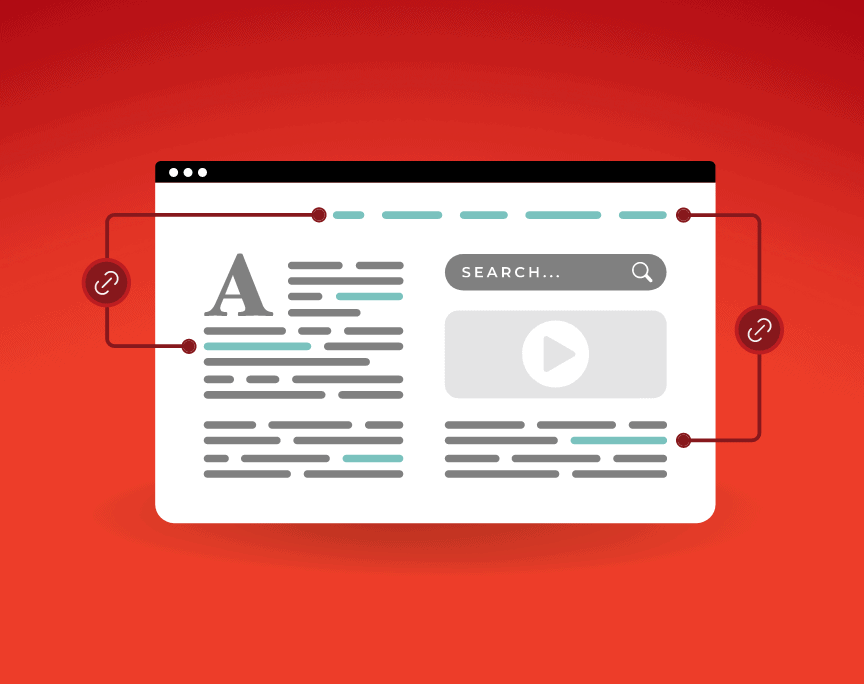When it comes to search engine optimization (SEO), content is king.
That’s the refrain repeated by digital marketing agencies, freelancers, and search optimization professionals for decades—and for good reason. It’s almost impossible for your website to rank higher in search engine results pages (SERPs) without a foundation of strong, keyword-optimized onsite posts.
But here’s the problem: not all onsite content is equally valuable for your SEO strategy. And in some cases, your content may be holding you back.
How can you tell which pieces of content are valuable? How do you identify problematic content areas? And how do you make plans for improvement?
Contents
- 1 What Is a Website Content Audit?
- 2 Why Is Performing a Content Audit Important?
- 2.1 Remove ROT (Redundant, Outdated, or Trivial) Content
- 2.2 Understand the Scope of Your Content
- 2.3 Determine Your Overall SEO Effectiveness
- 2.4 Compare the Quality of Content to Industry Standards
- 2.5 Assure Messaging Stays Consistent
- 2.6 See If Content Makes Your Brand More Trustworthy
- 2.7 Scrutinize Content Organization
- 2.8 Analyze Metadata to Ensure It Aligns With User Intent
- 3 Benefits of Performing a Website Content Audit
- 4 How to Do a Website Content Audit
- 5 Key Takeaways
What Is a Website Content Audit?
A content audit is a thorough and empirical review of the content on your website. It includes not only your core pages, but also your blog posts, landing pages, and any other pages of your website meant to play a role in your SEO strategy.
In the course of this website content audit, you’ll examine the quality and function of each page of your website, evaluate its contributions to your SEO strategy, and brainstorm potential changes you can make to improve your SEO results.
Why Is Performing a Content Audit Important?
As a growing business, it’s important to perform content audits because it allows you to do the following:
Remove ROT (Redundant, Outdated, or Trivial) Content
ROT (redundant, outdated, or trivial) content doesn’t contribute much to your SEO strategy—and might actually be detracting from it. If the content overlaps with another, if it’s no longer timely or relevant, or if it covers a topic that isn’t of interest to your target audience, you should get rid of it or repurpose it into something more meaningful.
Understand the Scope of Your Content
In the relentless pursuit of higher rankings, it’s common for webmasters to develop content without spending enough time on strategy. With a website content audit, you can view all your content from a high level, determine your strengths and weaknesses, and brainstorm your next strategic moves.
Determine Your Overall SEO Effectiveness
How is your content contributing to your SEO strategy overall, and what types of results are you seeing? Some posts are likely more effective than others, which ones are they and why are they so effective? Which posts are least effective and why are they so ineffective?
Curious to see what SEO metrics you should be following to measure the performance of your company website? Read our blog here for more info.
Compare the Quality of Content to Industry Standards
You’ll also spend time evaluating each piece of content based on objective, established standards. You can look at things like word count, reading level, accessibility, and perhaps internal standards like number of CTAs or number of external citations.
Assure Messaging Stays Consistent
Do all pieces of content throughout your website have a similar voice and relatively consistent messaging? If not, this is your chance to correct it.
See If Content Makes Your Brand More Trustworthy
Each piece of content on your website should contribute to your brand trustworthiness. Content is your opportunity to showcase your expertise, thought leadership, and authenticity.
Scrutinize Content Organization
Is each piece of content on your website appropriately categorized and organized in a way that makes sense to visitors? Are there any opportunities to combine posts, rearrange posts, or otherwise make modifications to improve this organization?
Analyze Metadata to Ensure It Aligns With User Intent
Metadata like titles and descriptions play an important role in your pages’ appearance in SERPs. Your content audit will require you to analyze the direction, relevance, and length of each piece of metadata.
Benefits of Performing a Website Content Audit
There are many benefits to performing website content audit. It helps you:
Find Potential Problems in Your Website Content
Not all of your content is going to be perfectly optimized for search engines. If there’s a problem, your audit will reveal it and give you a chance to correct it. For example, you may have multiple pieces of content serving the same purpose. You can combine and selectively delete these posts so you have a singular, more powerful piece to serve as your anchor.
Identify Areas to Repurpose Valuable Content
Some of your content will reveal itself to be irrelevant in some way, but that doesn’t mean it’s a total waste. This could be an opportunity to repurpose your valuable content in some other form. Take the important bits, reimagine the rest, or consider reformatting to get more value out of your work. If a post is underperforming or doesn’t meet your quality standards, you could even rewrite it or upgrade it so it better serves your goals.
Discover Content Gaps That Need to Be Filled
This is also an opportunity to discover content gaps that need to be filled. For example, let’s say you have 25 target keywords for your SEO campaign, and only 22 of them are associated with a strong anchor content page. You can identify the 3 remaining keywords you need to target and develop content for each of them.
Evaluate the Quality and Timeliness of the Content
Even the best writers sometimes produce subpar work, and most topics become obsolete or irrelevant eventually, so it’s important to periodically review all the content on your website for quality and timeliness. If you find content that is no longer relevant, typically due to outdated information, or if you find a piece that was never up to your highest quality standards to begin with, you can take action. Sometimes, a rewrite is all it takes, but other times, you’ll need to take more intensive intervening action.
Improve the Structure of Information for a Better User Experience
User experience also matters in the realm of onsite content. If your content is hard to read, if certain elements of the content don’t load, or if users have a hard time “scanning” your content at a surface level, it can impact your user experience negatively. This is your chance to clean things up, making your content much easier to read across all devices and platforms.
How to Do a Website Content Audit
Now let’s talk about how to do a website content audit.
You can do the work yourself if you have an abundance of time and some tools to help you manage the process. Otherwise, you’re probably better off working with a digital marketing agency or a full SEO team with experience in website audit work.
You’ll perform this work over several steps.
Step 1: Set Goals and Identify Keywords
Before you start looking at the content on your website, you need to understand the context for that content, including how it fits into your SEO goals. What are you trying to achieve in your SEO campaign? What are the most important keywords that you’re trying to target? Which of these keywords are primary and which ones are secondary? Are you trying to reach a specific ranking for any of these keywords or reach that rank by a specific date?
Once you outline your core SEO goals, you’ll be in a better position to determine whether each piece of content on your site is in service to those goals.
Step 2: Examine Individual Pages
Next, you’ll start looking at each individual page of your website. This is arguably the most time-intensive and tedious step, but it’s also the most important.
Be sure to analyze each of the following variables for each piece of content on your website:
- URL. The URL should be short, relevant, and optimized with target keywords.
- Blog/page title. Your blog and page titles should be optimized for a unique target keyword and compelling for users as well.
- Metadata. Pay attention to keyword optimization and length of your titles, descriptions, and other metadata.
- Images/graphics. How much of your content is visual? Are your images, graphics, and other visuals optimized with alt text? Do they load properly?
- Breaks for call to actions (CTAs). If you care about conversions, your web content should have multiple calls to action (CTAs). Are there ample breaks in your content to encourage this user behavior?
- Organic pageviews. How many people have seen this content and how did they behave upon encountering it?
- Keyword rankings and their alignment with blog/page intent. How does this page rank and is it a good fit for your target audience?
- Content clickthrough rate. How many people who see this content in SERPs click through and read the content? How many of those people bounce afterward?
- Word count. How long and detailed is this piece of content? How does that compare to competing pages on your website and on competitors’ websites?
- Number of internal and external links. How many internal and external links are available in this piece of content? Are there solid opportunities to include more?
Step 3: Categorize Content and Determine Fit
Once you’re done with that, you can categorize each piece of content and determine how it fits with the rest of your strategy. What primary or secondary keyword is it attempting to target? Does it overlap with any other pieces of content on your website? Is this piece of content evergreen, has it become irrelevant, or is it poised to become irrelevant in the future?
There are some cases where these determinations are difficult to make. But for the most part, you should be able to determine whether the content is a good fit, a passable fit that needs some improvement, or a bad fit that needs to be eliminated or transformed.
Step 4: Analyze Content Performance Data
You should also spend some time analyzing content performance data. In other words, how is each piece of content performing individually?
How is this piece of content ranking in search engines? How many organic visitors is it generating?
How do users behave on this page? Is dwell time higher than it is for other pages? Are users bouncing from here? What’s the conversion rate like?
If a piece of content isn’t performing well for your SEO strategy, but it’s doing well in other areas, it might be worth keeping or upgrading. If the content is underperforming in all areas, consider scrapping it or recycling it for parts.
Step 5: Create (and Assign) Action Items
Finally, create and assign action items. After all, your website content audit isn’t going to do you much good unless it’s actionable. Figure out which pieces of content need changes, upgrades, or repurposing, and assign tasks and set timelines to get the work done.
Key Takeaways
A website content audit is an ideal way to evaluate how your content is performing and how it fits with your current SEO strategy and goals. After analyzing each piece of content for its fit and performance, you should be able to devise alterations that put you in a better strategic SEO position. It’s very time consuming and exhaustive to do all this work on your own, so consider enlisting the help of a digital marketing agency to complete it.
At Abstrakt Marketing Group, we help businesses like yours discover gaps in your content, improve your onsite content strategy, and ultimately help you generate more leads through your company website. Are you ready for your free website audit? Contact us today to get started!

Madison Hendrix
Madison has worked in SEO and content writing at Abstrakt for over 5 years and has become a certified lead generation expert through her hours upon hours of research to identify the best possible strategies for companies to grow within our niche industry target audiences. An early adopter of AIO (A.I. Optimization) with many organic search accolades - she brings a unique level of expertise to Abstrakt providing helpful info to all of our core audiences.
- Madison Hendrix
- Madison Hendrix
- Madison Hendrix
- Madison Hendrix





